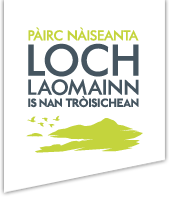
The challenge of sustainable travel provision in rural, visitor locations
By Kenny Auld, Head of Visitor Services at Loch Lomond & The Trossachs National Park Authority
If Scotland is to reach net zero by the 2045 target date, the issue of sustainable transport is going to come right to the forefront and will require action all the way up from individual to government level.
For even as we encourage people to leave their cars behind and use more sustainable and active modes of transport, here in Scotland’s first National Park we are acutely aware that there are serious gaps in public transport provision in our rural areas.
Around 7m visitor trips are made to the National Park every year and 85% of those journeys are made by car. Other popular destinations such as the Pentland Hills and Glen Nevis report a similar trend. With such car dependency for visits to the outdoors (if Scotland is to achieve a 20% reduction in car kilometres by 2030) the importance of these journeys to visitor hotspots is clear.
The transport system we have in rural areas was understandably designed around essential services for residents. This means for example that it’s easier to get from Balloch to Balmaha (a popular visitor hotspot) on a Tuesday morning in November, than it is on a Saturday in the peak of the summer.
The Covid-19 pandemic has seen a surge in demand for staycations and day trips and all the signs are that this will continue. The high volume of journeys we are now seeing is more than enough to justify investment into new visitor-focused transport systems which reduce emissions, congestion, and create jobs as part of a green economy.
Spending time in places like the National Park has benefits for physical and mental wellbeing and the surge in visitor numbers in recent years has provided a much-needed boost for tourism businesses. Yet the increasing number of car journeys is not just contributing significantly to carbon emissions, it is also having an impact on traffic, local communities and the visitor experience.
Developing and promoting sustainable ways for people to travel to, from and around the National Park is a crucial part of our work to help tackle the climate emergency. We recently launched a journey planner app to encourage visitors to consider leaving the car at home and are electrifying our own fleet of vehicles.

Journey Planner
This shift to more sustainable travel will take time though and needs collaboration from a range of organisations to ensure places such as the National Park have an integrated transport system. Better connectivity, links to active travel networks and a joined-up transport system that is inclusive for all is the ambition.
The impacts of climate change are already being seen and felt in the National Park through flooding and road closures due to landslides. Making sustainable transport a viable option for visitors needs to be part of the solution.

